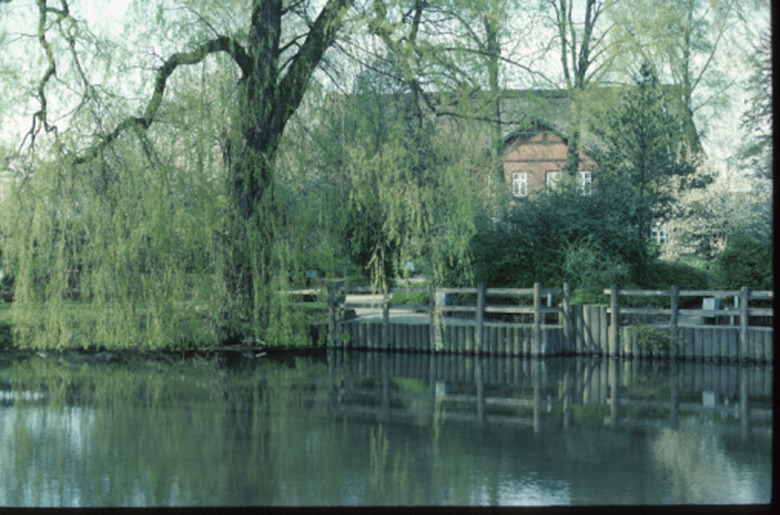How To Tell If A Weeping Willow Tree Is Dead
Not every weeping willow overlooks its own romantic image in a quiet pond, but something about the Salix is romantic. A healthy weeping willow is the picture of grace and elegance, its light green branches blowing gently like long hair in the breeze. The willow likes a placement near water, but it will happily move into your backyard if you water it sufficiently. This lovely tree needs a 40-foot cube of space in your yard because its branches reach as far as the mature tree's height.
Step 1
Look at your calendar. In winter and early spring, a leafless weeping willow should not arouse alarm. Willows are deciduous and lose their leaves every year in late fall or early winter.
Step 2
Check your tree for leaves or growth in June. If the first month of summer passes without green growth on the branches, your tree is probably dead. Look carefully around the base of the tree for sucker growth. Often when a trunk dies, the willow grows replacement trunks.
Step 3
Scratch some of the dead-looking tree branches with your thumbnail or a small pocketknife. If the cambium beneath the outer bark is green, the limb remains alive. If it is dull brown or gray, the branch is dead.
Step 4
Bend some of the lower branches. Dead wood snaps, while green willow branches bend almost in half without breaking. If most of the branches bend, your tree is alive.
Tip
If your weeping willow is alive, but on its last legs, cut off branches that show green under the bark. Stick each branch in moist soil, water through the summer, and you have a new weeping willow tree.
Warning
Research the tree before you buy one for your back yard. The weeping willow roots spread far, wide and fast, and often rise to the surface as the tree ages. Ron Smith, Horticulturist at NDSU Extension Service, advises homeowners not to plant weeping willows in residential yards because of the size of the tree and its roots.
